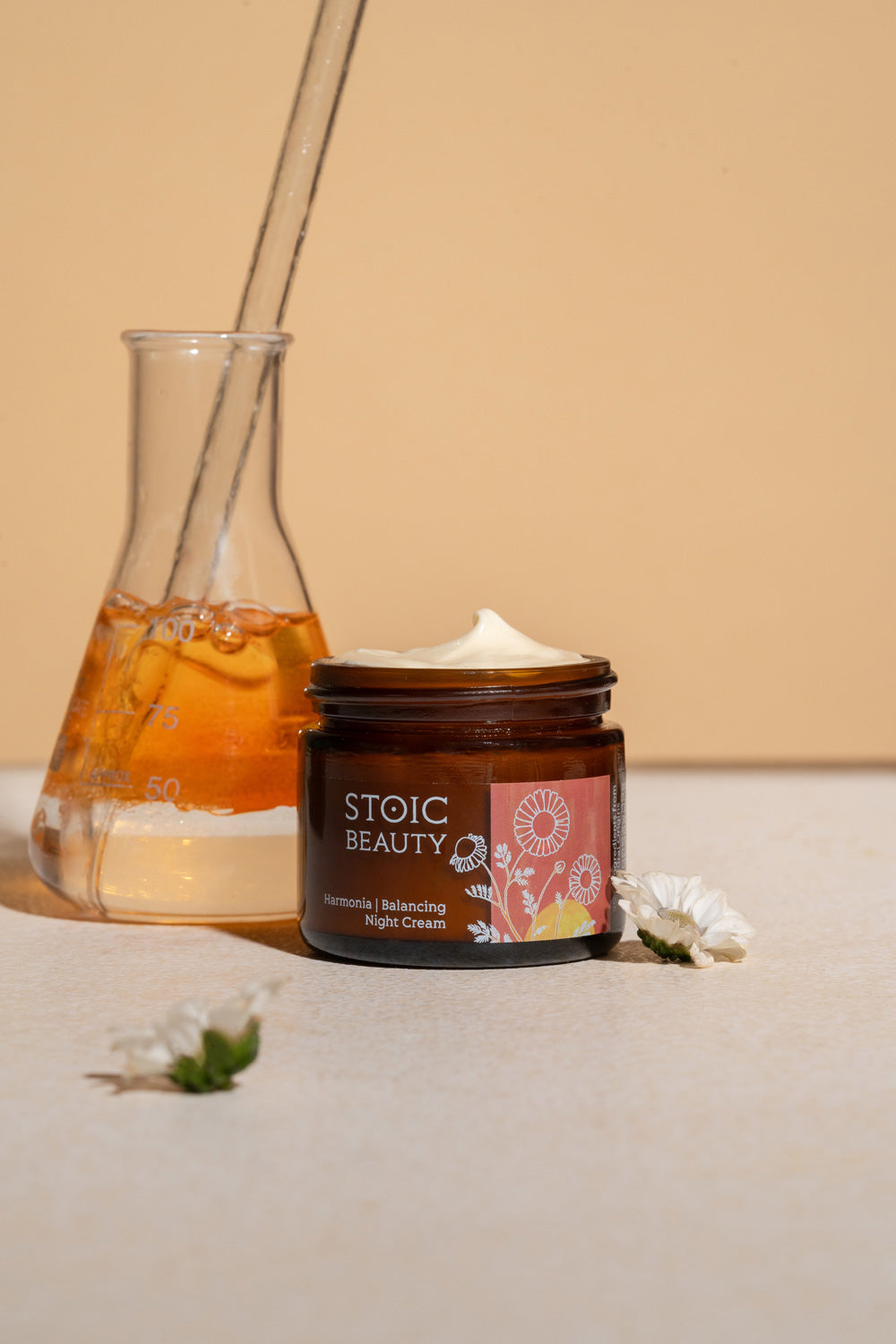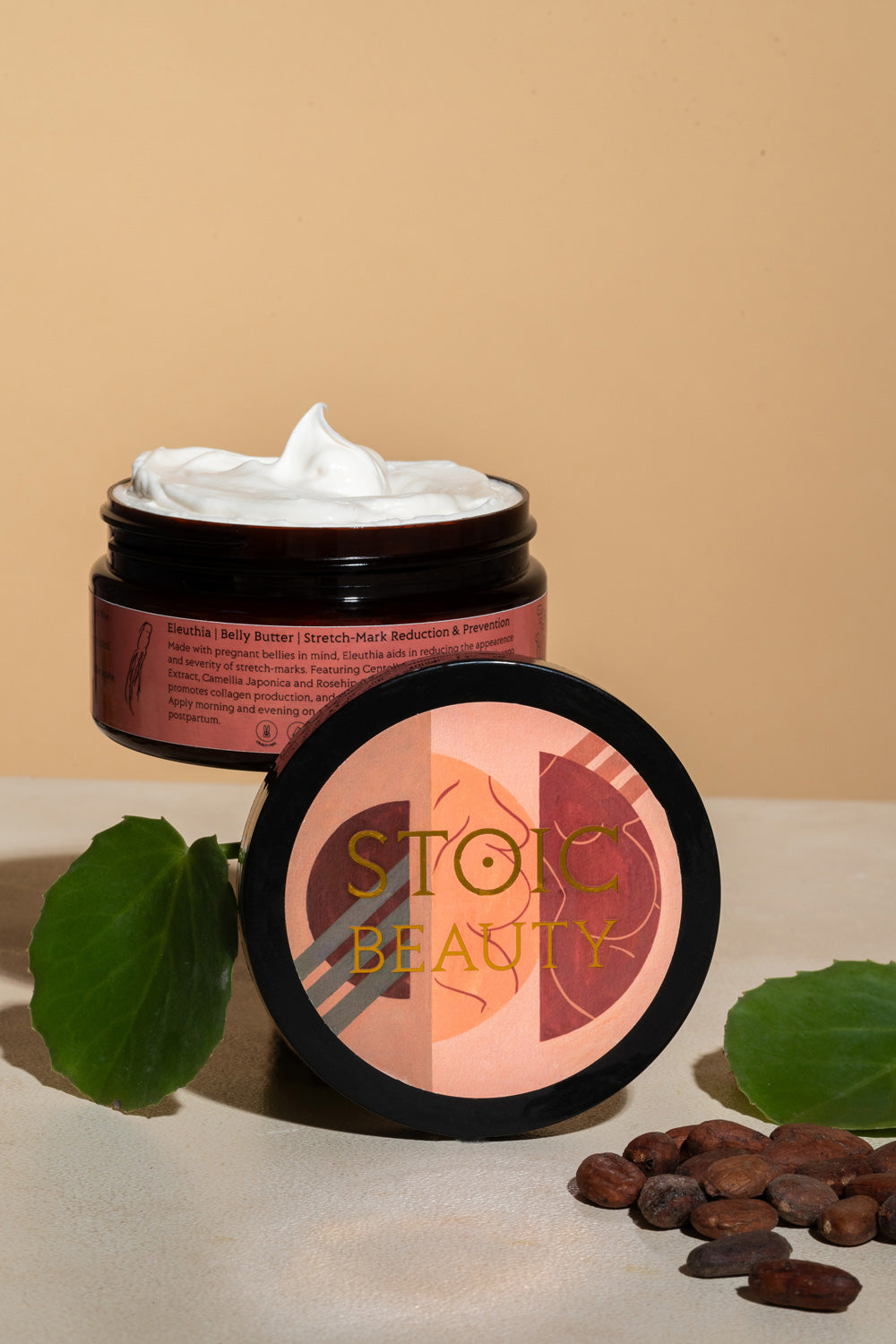
Let’s talk about oil for a minute.
What is it? Why is ‘oily’ a skin type? Why do some products market themselves as oil free and others are purely oil?
We are all familiar with oil. It’s slippery or greasy, liquid at room temperature, and full of fats. Oils can be synthetic (mineral oil) or plant based (olive oil, raspberry seed oil), or even come from animals (like lanolin). Our skin also produces an oil like substance called sebum.
Is oil good for your skin or not?
The answer is: for the most part, yes! However, there are a few baddies in the category: essential oils which may photosensitize the skin, and heavy oils that can clog pores. Heavy oils include your standard pantry favourites like coconut oil, olive oil, canola oil. Best to leave these off your face!
But, why do faces get oily?
Sebum is produced by sebaceous glands. These glands are microscopic, living below the surface of the skin and are most concentrated on the face and scalp. They attach to hair follicle openings and produce sebum to lubricate and protect your hair and skin. It is the number/concentration of sebaceous glands one has and their level of oil producing activity that determines whether you have oily, combination, normal, or dry skin. Many factors determine the productivity of our sebaceous glands (including genetics, hormones, and environmental factors). While this does not determine whether you will experience clear or acne prone skin it certainly plays a role.
It is these tiny follicle openings, where oil is most concentrated, that can give our faces some trouble. When dead skin cells and bacteria mix with our body’s sebum our follicles can become clogged causing blackheads (when the pore remains open) and white heads (when the pore closes around the clog), or these blockages can lead to inflammation and infection to produce pimples in all their glorious forms.
So, why put oil on your face?
Oil is a great moisturizer and protector. It mimics our skin’s natural defences and creates a barrier that locks in hydration and moisture while protecting it from external irritants. That’s why our skin produces its own version.
No matter what your skin type oil can be an amazing addition to your skin care regime: just make sure you get the right blend! A good formulator can advise which oils are best for various skin types and will avoid high concentrations of comedogenic (pore-clogging) oils. Please, please, please, do not put pure coconut oil on your face! It is highly comedogenic, and while we love coconut oil’s nutrients, let’s keep it in our cooking. But, I digress:
As someone with combination skin I am an oil enthusiast and incorporate it into my routine in two ways.
Oil Cleansing

First, an oil cleanse (you will also hear this referred to as a pre-cleanse, or first cleanse). I use an oil cleanser or cleansing balm as the first step of my evening routine. Rubbing oil on my face at the end of the day is a wonderful release (as it doubles as a face massage 🥰 ). Cleansing oils are formulated to condition the skin, break down makeup and sunscreen, and soften any blockages that may have started forming within your pores throughout the day. Like dissolves like, so one of the best ways to target any hardening sebum that is collecting below the top layer of your skin is to soften it with a bio-compatible product, meaning an oil that mimics the structure of your sebum.
Take your time with this, I probably take around 2-3 minutes to let the oil come to body temperature and work its magic (while I massage my jaw, temples, and between my eyebrows). Then I wet my hands and emulsify the oil on my face, turning it into a milky substance that will rinse easily off your face taking the days grime with it.
Two important details:
One: Do use an oil cleanser that has been formulated as such, not just a straight up oil. Emulsification is key to actually removing all of the grime and bacteria you have just softened with your first cleanse. Stoic Beauty does not currently offer oil cleanses, but we are in love with Afiya Beauty’s oil cleanser.
Two: This is called a first cleanse for a reason. Be sure to follow up with a water-based cleanser to actually cleanse your skin. Using an oil cleanser gets rid of all the stuff that is coating your skin (make-up, sunscreen, grime, and bacteria) making your water cleanser more effective. Following up with a second cleanse will ensure that you have removed all of the oil and cleanser on your face. This process cleans and primes your skin for the rest of your products, making your night time routine more effective.
Face Oil
At the end of my evening routine, I use a face oil. I have very sensitive skin, so if my skin is irritated in any way it’s all I use after cleansing my skin. Since oil is biocompatible its natural benefits can absorb easily into the skin without causing irritation. In addition, it augments my skins natural forms of defence by sealing in moisture and preventing trans epidermal water loss (TEWL). TEWL is the process of losing hydration through your skin, which we are especially susceptible to while we sleep. Double that effect in the dry winter season.
Natural oils are powerhouses for our skin. They are rich in omega fatty acids, vitamins, and antioxidants. That being said, they are also very delicate and on their own can go off or oxidize quite easily. That’s why I choose a blended oil over a pure oil. Skilled formulators can blend specific ratios with stability and skin function in mind. Different ratios of omega 3’s and 6’s support distinctive functions of our skin. Higher amounts of vitamin E stabilizes, while different antioxidants fight free radicals or stimulate collagen production. For example, rose hip and sea buckthorn oils are especially supportive of mature skin because of their high amounts of vitamin A and linoleic acid. However, they are both greasy oils and their pure concentrations expire quite quickly. When blended with jojoba or kukui these oils become easier to absorb, lighter in texture, and less likely to rub off on your pillow (or turn your skin yellow, I’m looking at you sea buckthorn!). Add in some tocopherol for stability and now we’re getting into some nice formulation territory.
Face oils are also excellent if you want to incorporate a tool into your skincare routine. They add excellent lubrication for a jade roller or gua sha. These tools are used to massage, de-puff, increase circulation, and encourage lymphatic drainage – but they can also be a little rough on the skin without lubrication. Incorporating an oil adds a nice slip & glide and really ups the at home facial experience.
All of that being said – oils are easy. They are the all-natural hybrid of a serum and moisturizer. At the end of the day when I just want to tuck into bed, using a 3-5 drops of face oil is a simple and easy way to take care of my skin and call it a day.
We'd love to hear your favourite oils for cleansing and moisturizing, connect with us on Instagram @stoicbeautyskincare.






